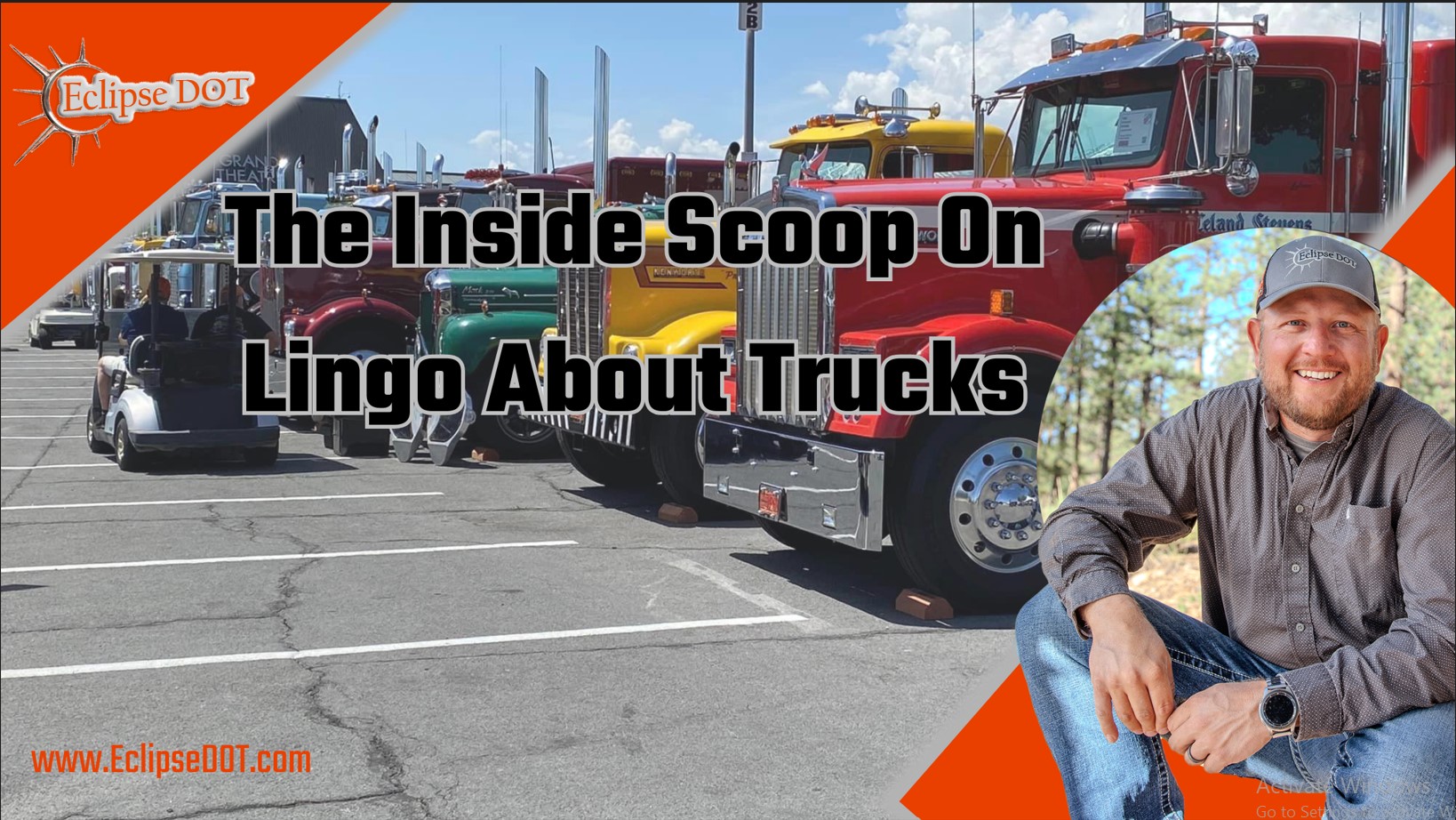The Inside Scoop on Lingo About Trucks
The other day, I was talking to someone about DOT stuff, and they gave me that look. You know the one, right? It’s like a dog listening to a high-pitched squeal. I could tell they were completely lost. We ended up spending about 20 minutes explaining everything that I breezed through in just 2 minutes of conversation. That’s when I realized I needed to write an article about this.
So, here it is! Today, we’re going to delve into the jargon surrounding different types of trucks. Let’s start with the basics:
- Steer Axle: This is the front axle of a truck, the one that steers the vehicle.
- Drive Axles: These are the back axles, the ones that propel the truck forward.
- Dually: This term refers to two tires together on the same side of the axle.
- Super Single: This is a single, wide tire (usually a drive tire) that takes the place of a dually.
- 425 Steer: When people mention 425s or 385s, they’re referring to the width of the tire in millimeters (MM). These are commonly found on heavy haul trucks, dump trucks, and concrete trucks, among others. They allow for more weight on the steer axle due to their wider tires (as long as the axle is rated for it). For perspective, a typical tire is about 11″ wide, while a 425 is closer to 17.5″ wide.
- Single Screw Truck: This is a truck with a drive axle, often used in local delivery. Distributors commonly use these for in-town deliveries. Sometimes, you’ll see them as doubles or even triple rigs, like those used by UPS for freeway freight between cities.
- Twin-Screw (Tandem) Truck: This is a truck with two drive axles and comprises the majority of semis seen on highways. They can carry more weight because they have more axles in contact with the ground. Most twin-screws can haul up to 34,000 lbs. on the drive axles.
- Twin Steer: This is a truck with two steer axles, commonly found on pump trucks, cranes, and some major heavy haul trucks, especially in the oil field.
- Tridem: This is a group of three axles, used to haul even more weight than a tandem. Most tridems can legally carry up to 48,000 lbs. without requiring permits.
- Quad: This is a group of four axles used for extremely heavy loads. As you may have noticed, the more axles a vehicle has, the more weight it can carry.
- Pusher Axle: This is an axle that the driver can lift and lower as needed. They’re usually found on the drive or trailer axles, and the driver has full control over how much pressure the pusher axle exerts on the other axles and whether it’s up or down. They can be fixed or steerable.
- Tag Axle: This axle trails behind the truck or trailer and is often seen on dump trucks and concrete trucks. The driver can control it, and while most are steerable, a few are fixed.
- Steerable Axle: This axle has wheels that can turn from side to side. While most aren’t controlled by the steering wheel, they steer on their own to follow the truck’s natural direction.
- Fixed Axle: These axles have wheels that don’t steer; they always go straight, like a drive axle.
- Flip Axles: These are found on the backs of lowboys. They flip down and up at the driver’s command, allowing them to carry more weight when flipped down.
- Spreader Bar: Also on lowboys, this allows drivers to move the axle back and make their trailer longer, enabling them to carry even more weight.
- Jeep: No, it’s not about off-roading. A Jeep is a trailer extension for the front of the trailer, connecting directly to the truck’s 5th wheel. They usually have 2–4 axles, allowing the truck to carry even more weight.
- Dolly: Again, not talking about toys here. A dolly is a way of hooking one trailer to another. It connects to a pintle hitch on the back of the first trailer and has a fifth-wheel hitch for the second trailer to attach to. It also has air and electric lines connecting the two trailers.
- Pulling Doubles: This is when you pull two trailers, using a dolly to connect them.
- Pulling Triples: This is when you pull three trailers.
I’m sure I might have missed something, but I guess I’ll have to wait for another article. Hopefully, after reading this, you’ll be able to have a conversation with a trucker and understand what they mean when they say, “Boy, it was a tough day. The inside dual of my rear drive piped on me,” or “Boy, that load was so heavy I had to have 2 Jeeps and a spreader on my flip just to get it down the road!”
Discover our CDL & DOT Compliance blog for an exclusive trial at DOTDocs.com. Also, claim your FREE micro audit at THE ECLIPSE DOT MICRO AUDIT. Ready for smoother operations?


